Discover the rich diversity of Colorado’s mycological world, featuring over 2,000 species. From edible delicacies like porcini and morels to deadly varieties, this guide explores the state’s unique fungal landscape.
Diversity of Mushroom Species in Colorado
Colorado boasts an extraordinary diversity of mushroom species, with over 2,000 to 3,000 varieties thriving in its ecosystems. From the prized edible porcini and morels to the deadly destroying angel and fly agaric, the state’s fungal landscape is vast. High-elevation forests, aspen groves, and fire-recovery areas host unique species like the orange peel fungus and hawks wing mushrooms. The diversity is further enriched by species such as the giant western puffball and the lobster mushroom, each adapted to specific habitats. This variety makes Colorado a paradise for mushroom enthusiasts, offering both culinary delights and scientific fascination. The state’s diverse climates and terrains support a wide range of species, reflecting its rich mycological heritage.
Best Spots for Mushroom Hunting in Colorado
Colorado offers some of the best spots for mushroom hunting, with its diverse ecosystems and high elevations. The Rocky Mountains, particularly areas around aspen groves and spruce forests, are hotspots for species like porcini and morels. Burn areas and recently fire-damaged zones are ideal for finding morels, while higher elevations above 7,000 feet are perfect for chanterelles and boletes. Areas with ponderosa and lodgepole pines are great for lobster mushrooms. The western slope of the Rockies is known for giant western puffballs. Timing is crucial, with summer months being prime for many species. For a successful hunt, knowledge of soil types, host trees, and microclimates is essential. Colorado’s vast wilderness ensures endless opportunities for mushroom enthusiasts.
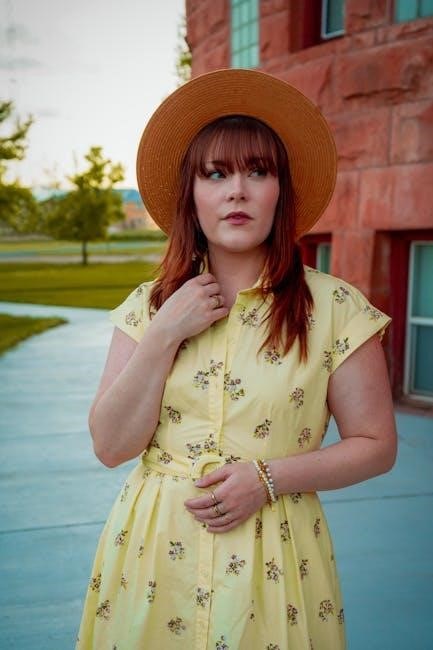
Common Types of Mushrooms in Colorado
Colorado is home to a wide variety of mushrooms, including edible species like oyster, chanterelle, and porcini, as well as poisonous types such as the destroying angel.
Porcini Mushrooms (Boletus edulis)
Porcini mushrooms, known scientifically as Boletus edulis, are highly prized for their firm, earthy, and nutty flavor. Often compared to hamburger buns in appearance, they are a favorite among Colorado mushroom hunters. Typically found in high-elevation areas, particularly under spruce trees near streams, porcini thrive in the state’s mountainous regions. They are considered one of the most delicious edible mushrooms, often used in dishes like risotto. Porcini are available from June to August and are a key target for foragers due to their rich culinary value and distinctive taste. Their popularity extends beyond Colorado, making them a sought-after species worldwide.

Morel Mushrooms
Morel mushrooms are among the most sought-after species in Colorado, renowned for their exceptional flavor and elusive nature. They typically grow at elevations below 8,000 feet, often near cottonwood trees and in areas recovering from forest fires. Their spongy, honeycomb-like appearance makes them visually distinct, but they are frequently mistaken for false morels, which are poisonous. Yellow morels are particularly prized, with a buttery, earthy taste that makes them a favorite in culinary dishes. Experienced foragers often search for them in recently burned areas, emphasizing the importance of precise identification to avoid deadly lookalikes. Their rarity and flavor profile make them a highlight of Colorado’s mushroom scene.
Chanterelle Mushrooms
Chanterelle mushrooms are a beloved delicacy in Colorado, known for their fruity, apricot-like aroma and vibrant peach-colored caps. Their wavy, funnel-shaped appearance makes them stand out in coniferous forests, where they thrive under spruce and fir trees. The unique combination of a fruity scent and earthy flavor adds to their allure, making them a favorite among chefs and foragers. Chanterelles are a testament to Colorado’s rich mycological diversity, offering a flavorful and visually striking addition to culinary dishes;
Puffball Mushrooms
Puffball mushrooms are a distinctive and sought-after species in Colorado, known for their round, puffy appearance. They often grow in fields, meadows, and open forests, emerging during summer and early fall. The giant western puffball, a common variety, can reach up to 28 inches in diameter. When young and firm, these mushrooms are edible and mild, resembling tofu in texture. However, they must be carefully identified to avoid confusion with poisonous lookalikes. Puffballs are a great introduction for novice foragers due to their size and unique characteristics, though caution is essential to ensure safe consumption.
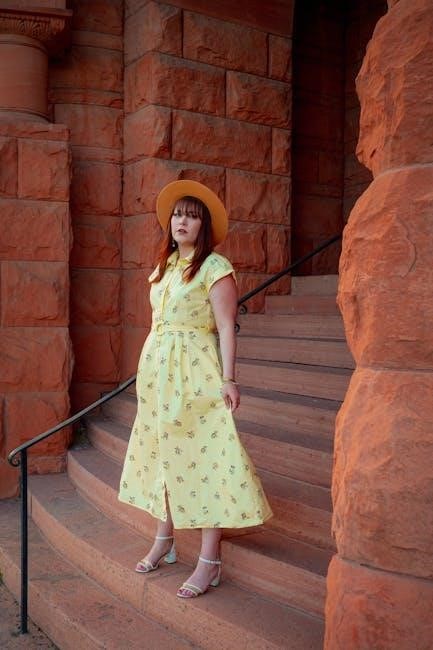
Mushroom Identification Tips
Accurate identification requires observing spore prints, cap shape, stem characteristics, and gills. Consult field guides or experts to ensure safety and avoid deadly lookalikes in Colorado’s diverse fungi.

Key Characteristics for Accurate Identification
Accurate mushroom identification in Colorado relies on observing key characteristics. Start with spore prints by placing the cap on white paper to reveal spore color, which can help narrow species. Examine the cap shape—whether it’s conical, bell-shaped, or shelf-like—and note its size, color, and texture. Stem characteristics, such as rings, bulbs, or veils, are critical. Check gills or pores under the cap; their attachment, spacing, and color can distinguish edible from poisonous species. Habitat is equally important: note the type of trees, soil, or elevation where the mushroom grows. Consult experts or field guides to verify findings, as some deadly species mimic edible ones closely.
Understanding Spore Prints and Their Importance
Spore prints are a vital tool in mushroom identification, offering insights into a species’ reproductive features. To create a spore print, place the mushroom cap gill-side down on white paper and cover it. After a few hours, remove the cap to reveal a spore pattern. The color of the spore print—ranging from white to dark brown or black—helps identify species. For example, Boletus edulis produces a brown print, while Amanita species leave white prints. This method is crucial for distinguishing between look-alike species, ensuring accurate identification and safe foraging. Always combine spore prints with other characteristics for reliable results, as color alone isn’t sufficient for precise identification.
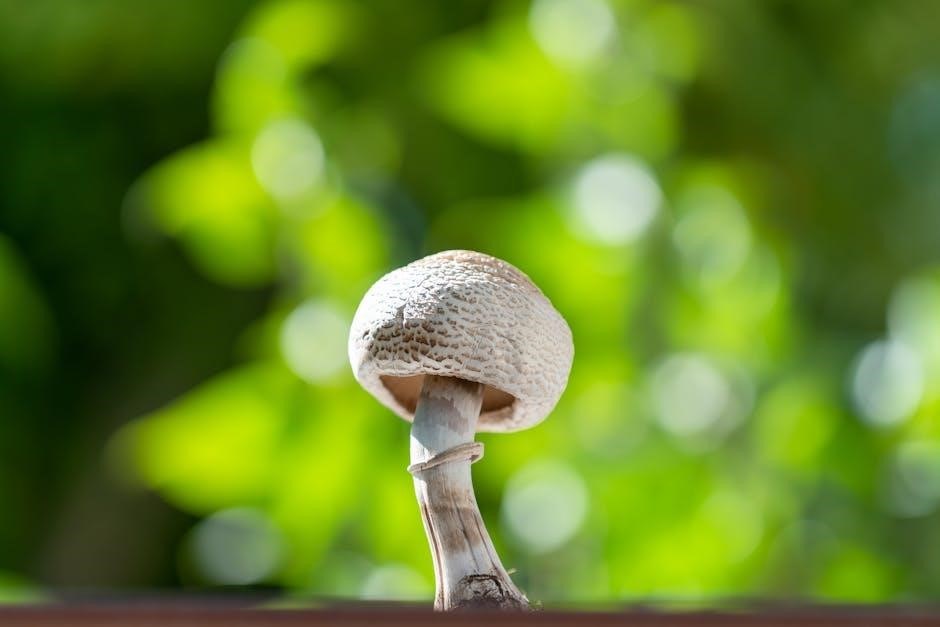
Safety and Risks in Mushroom Foraging
Mushroom foraging demands caution due to the risk of misidentification and potential poisoning. Colorado’s diverse fungi include edible species and deadly varieties like the Destroying Angel, requiring expertise to distinguish safely.
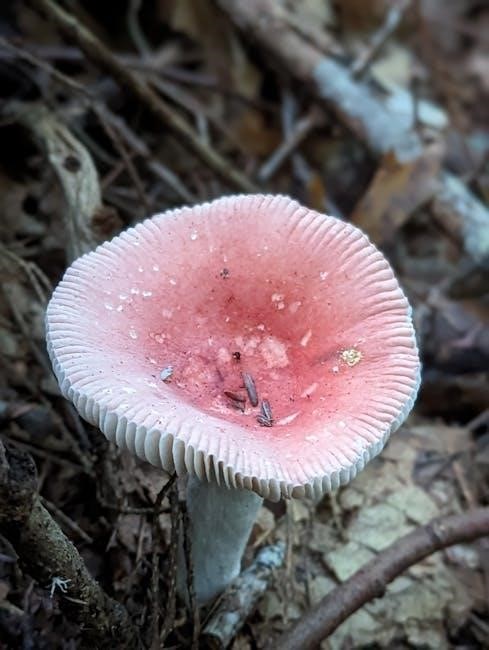
Dangers of Misidentification
Misidentifying mushrooms can lead to severe poisoning or even death. In Colorado, species like the Destroying Angel resemble edible varieties but contain lethal toxins. Symptoms may delay for hours, making timely treatment difficult. Experts warn that only those with extensive knowledge should forage, as even experienced enthusiasts can mistake deadly fungi for safe ones. The state’s diverse mycological landscape increases the risk, emphasizing the critical need for accurate identification. Always consult multiple field guides and seek expert advice to ensure safety while hunting wild mushrooms in Colorado.
Poisonous Mushrooms to Avoid

Colorado is home to several highly poisonous mushrooms that demand caution. The Destroying Angel (Amanita virosa) and Death Cap (Amanita phalloides) are among the deadliest, causing liver and kidney failure. The Fly Agaric (Amanita muscaria), with its iconic red cap, is hallucinogenic and toxic. Other dangerous species include False Morels (Gyromitra spp.), which contain a toxin that can cause vomiting and seizures, and Conocybe filaris, a small, unassuming mushroom that is highly lethal. Additionally, Cortinarius rubellus can cause severe kidney damage. These mushrooms thrive in various Colorado habitats, from forests to meadows, making accurate identification critical to avoid life-threatening consequences.
Legal Considerations for Foraging in Colorado
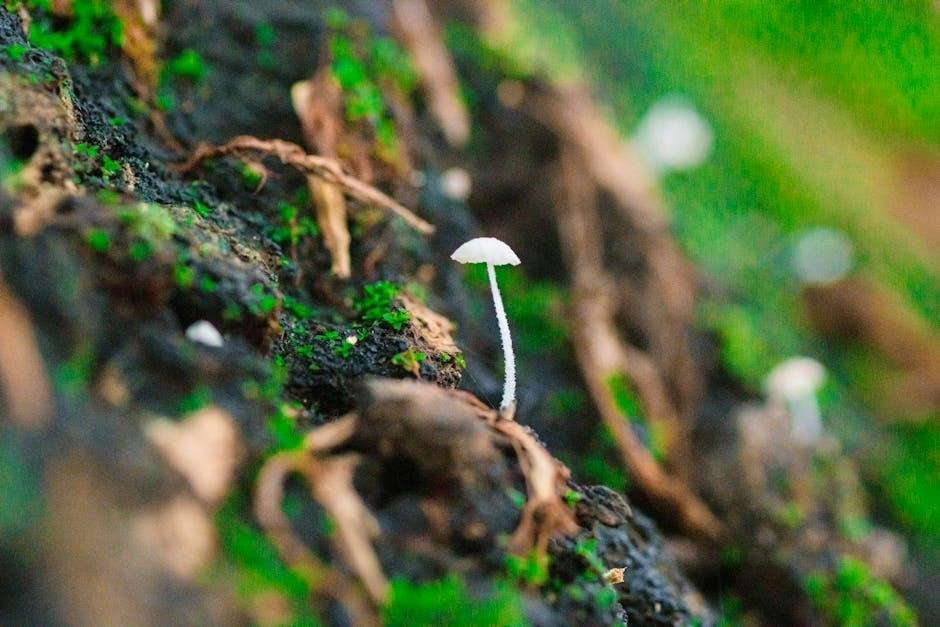
Before heading out to forage for mushrooms in Colorado, it’s crucial to understand the legal framework. Permission is typically required to forage on private property, while public lands may have specific regulations. National forests generally allow personal use, but commercial foraging often requires a permit. Additionally, some areas may restrict foraging to protect sensitive ecosystems. It’s essential to familiarize yourself with local ordinances and obtain any necessary permits to ensure compliance with state and federal laws. Ignorance of these regulations can lead to legal consequences, so always verify the rules before you begin your mushroom-hunting adventure.
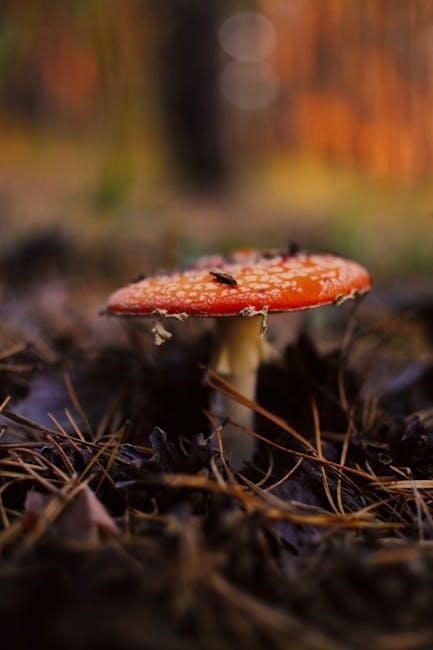
Colorado offers a fascinating world of mushrooms, from prized edibles like morels and porcini to deadly species that demand caution. This guide has explored the state’s diverse fungal landscape, highlighting key species, identification tips, and safety measures. Whether you’re a seasoned forager or a curious beginner, understanding Colorado’s mushrooms requires knowledge, respect, and adherence to legal guidelines. Always prioritize accurate identification and responsible foraging practices to ensure a safe and rewarding experience. With its rich mycological diversity, Colorado invites you to embark on a thrilling adventure into the wild, where every hike can lead to a new discovery. Happy mushroom hunting!
